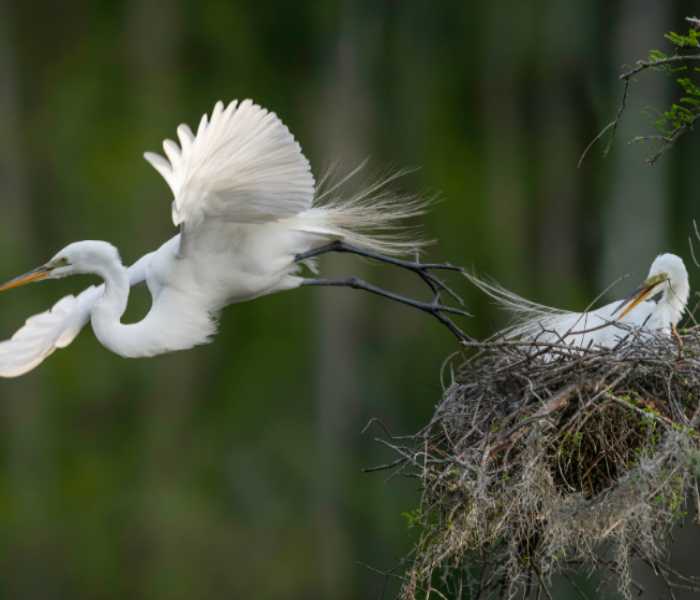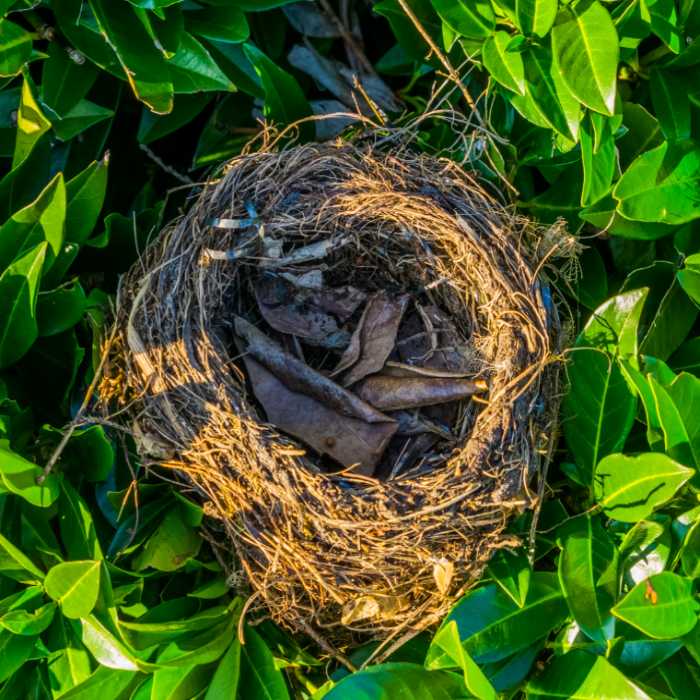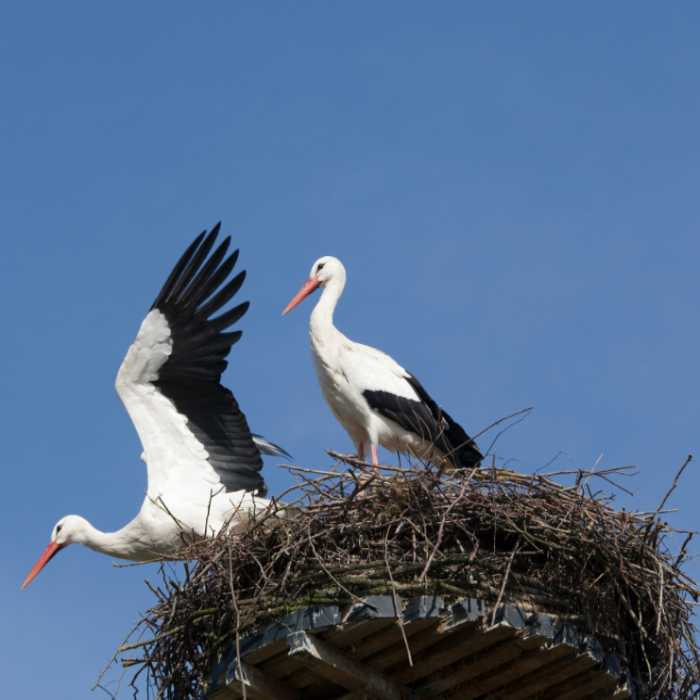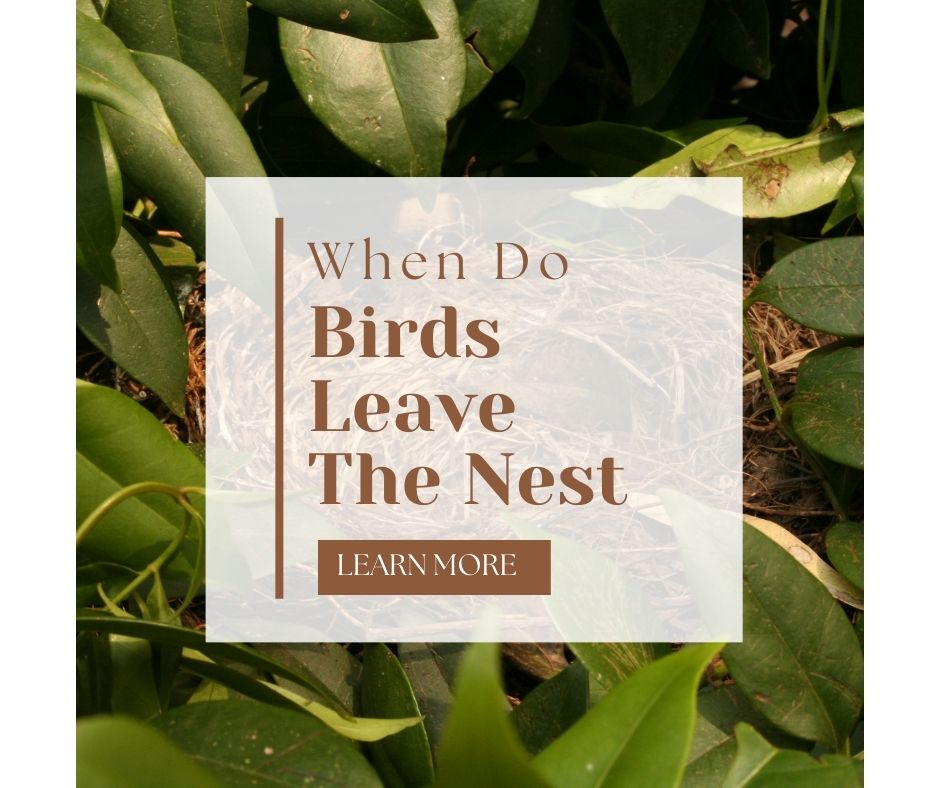When Do Birds Leave The Nest
Table of Contents
Ah, the miracle of life! When you observe baby birds hatching and growing up, you might wonder when do birds leave the nest? It’s a fascinating topic, and the answer isn’t always straightforward. The process of baby birds growing up and leaving the nest is known as fledging, and the timing can vary greatly depending on the species. But don’t worry, we’ll break it down for you.
Birds’ nesting habits are diverse, and the duration of time it takes for the little ones to leave the nest can vary from just a few weeks to several months. It mostly depends on the species and a variety of factors that impact their growth, development, and independence.
So, to find out when birds leave the nest, we’ll need to look at some specific examples and explore the factors that contribute to their fledging time. Ready to spread your wings and learn some interesting bird facts? Let’s dive in!

The Life Cycle of Birds
When it comes to the fascinating world of birds, understanding their life cycle can give you valuable insights into their behavior and growth. So, let’s dive in and explore the different stages in a bird’s life.
Hatching: This is where it all begins. A fertilized egg is laid by the mother bird and incubated for a specific period of time, depending on the species. During incubation, the young bird (called a hatchling or chick) grows and develops within the egg. Once it’s ready, it hatches and enters the world!
- Some examples of incubation periods:
- House Sparrows: 10-14 days
- American Robins: 12-14 days
- Bald Eagles: 34-36 days
Nestling: In this stage, the newly-hatched chick is still confined to the nest, completely dependent on its parents for food and care. Most birds don’t have feathers at this stage, making them vulnerable.
- Interesting fact: The length of the nestling stage varies among species.
- For example, Peregrine Falcons only spend about 3 weeks as nestlings, while American Goldfinches remain in the nest for 2 weeks.
Fledging: This critical stage marks the transition to independence for young birds. The fledglings, now with feathers, leave the nest and learn to fly. They might still depend on their parents for food, but they’re starting to learn essential life skills like finding food and evading predators.
- Did you know? The time it takes a chick to learn how to fly can be as short as 10 days for some sparrows, while other species, like the altricial eagles, take a whopping 2-3 months to fledge!
Juvenile stage: Now outside the nest and capable of flying, these young birds continue to learn and grow, enhancing their survival skills. The juvenile stage usually lasts until the bird reaches sexual maturity and is ready to breed.
- Variability: The age of sexual maturity can greatly differ between species, ranging from just **few weeks
Signs That Nestlings Are Ready to Leave the Nest
Have you ever wondered when and how nestlings decide it’s time to leave the comfort of their nest? They show certain signs and signals to let their parents – and keen observers like you – know they’re ready for the big leap. In this section, we’ll explore those telltale signs that indicate a nestling is ready to fledge.
Feather development is crucial when determining whether nestlings are ready to leave the nest. Look for feathers that are more developed, with the birds appearing less fluffy. You’ll notice that their flight feathers – found on wings and tails – will be well formed, and they’ll be able to stretch their wings fully.
Increased activity levels are another sign. Nestlings often become more restless and start to move around inside the nest more, just before they’re ready to leave. You might see them:
- Flapping their wings energetically
- Hopping around the edge of the nest
- Practicing their take-off and landing routines
Finally, independence from their parents plays a key role

Factors Influencing When Birds Fledge
Curious about when birds leave the nest? Various factors come into play, contributing to the range of time it takes for different bird species to fledge. Let’s dive into some of these factors!
Species and size play a significant role in determining how long a bird will stay in the nest. Generally, larger birds take longer to fledge compared to smaller ones. For example:
- Small birds: House Sparrows fledge after just 14 days.
- Medium birds: American Robins typically fledge within 13-16 days.
- Large birds: Bald Eagles take about 10-12 weeks to fledge.
Nest Type can also be a factor in how quickly birds leave the nest. Birds with open nests, like Blue Jays, might fledge sooner since they are more exposed to the elements and predators. In contrast, birds with cavity nests, like woodpeckers, may take longer since they are more protected.
Another factor to consider is the availability of food. Abundant food supplies can help support faster growth and development, allowing birds to fledge earlier. Conversely, if food is scarce, nestlings may take longer to develop.
Moving on, let’s examine how parental care and feeding habits affect the time it takes for birds to fledge. Birds that provide high levels of care, such as pigeons, can have their offspring fledge relatively quickly. On the other hand, species like swifts, which only feed their young a few times a day, result in a slower fledging process.
Understanding a bird’s environment and habitat can provide insights into when they’ll fledge. Birds living in rough or unpredictable environments may need to be more developed before leaving the nest, as they’ll face harsher conditions. Furthermore, birds in migration-heavy areas might need to grow and leave the nest before migration season starts.
To sum up, here are some key factors that influence when birds fledge:
- Species and size
- Nest type
- Availability of food
- Parental care and feeding habits
- Environment and habitat
Remember that these factors can vary greatly among different bird species, making it difficult to pinpoint an exact timeframe for every bird. However, these factors should provide a good understanding of what affects a bird’s fledging process.
Happy birdwatching!
How Parent Birds Move Fledglings from the Nest
So, you’re curious about how parent birds move their young once they’ve left the nest? You’re in the right place! In this section, we’ll explore the fascinating world of fledglings and how their parents help them transition from the nest to full-fledged birdhood.
It’s important to know that not all birds are the same in terms of parenting methods or when their young leave the nest. In fact, the process can vary significantly between species. Some birds, such as the American Robin, might leave the nest as early as two weeks after hatching, while other species, like Bald Eagles, can take around 12 weeks. Here are a few ways parent birds help their fledglings move on from their nest:
- Escorting: One common technique parent birds use is escorting their fledglings away from the nest. They’ll typically help the young birds find a safe, nearby perch and keep an eye on them. This is particularly true for altricial species, like songbirds, which are born helpless and require extended parental care.
- Feeding: During their early days away from the nest, fledglings may still depend on their parents for food. While learning to find their own meals, parent birds will continue to bring food to their young so they can gain strength and develop their essential life skills.
- Encouragement: Parent birds often use vocalizations to communicate with their fledglings. By doing so, they encourage and guide their young to explore their surroundings and develop essential skills such as flying and foraging.
There are also some interesting species-specific examples worth mentioning:
- Penguin parent control: Adult Emperor Penguins have a unique way of helping their chicks leave the protective huddle. Using their feet, they nudge the young ones away from the group, encouraging them to venture into the Antarctic wilderness and eventually join the adult colony.
- Burrowing Owl eviction: Burrowing Owls have a more hands-off approach. Once the owl chicks are ready to leave the burrow, their parents stop providing food. This encourages the young birds to venture out and seek food on their own.
| Bird Species | Time To Leave Nest (Approximately) |
|---|---|
| American Robin | 2 weeks |
| Bald Eagle | 12 weeks |
| Burrowing Owl | 6 weeks |
| Emperor Penguin | 5-6 months |
As you can see, fledglings receive a variety of support from their parent birds as they transition from nest dwelling to fully independent birds. Each species has its unique methods of moving their young from the nest, ensuring the success of future generations. So, next time you spot a young bird out and about, take a moment to appreciate the incredible journey that both fledglings and their parents embark on during this exciting stage of life.

Different Departure Times for Various Species
When it comes to birds leaving the nest, you’ll find that there’s no one-size-fits-all answer. Different species have their own unique departure times, which can vary depending on factors like development, environmental conditions, and availability of food resources. Let’s delve into the diverse departure times for some common birds you might encounter in your backyard or nearby park.
One of the earliest nest-leavers would be the American Robin. These birds fledge – meaning they develop wing feathers large enough for flight – in just 13 to 16 days. Imagine becoming ready for the skies in just over two weeks! Here are some other notable species and their average fledging times:
| Species | Fledging Time (Days) |
|---|---|
| American Goldfinch | 11-17 |
| Eastern Bluebird | 16-21 |
| House Sparrow | 14-16 |
| Mourning Dove | 13-15 |
Keep in mind that these figures are averages – individual birds might fledge a little earlier or later depending on various circumstances.
For the raptors, you know those majestic birds of prey, we’ve got a different story. Eaglets, or baby Bald Eagles, spend a whopping 70 to 85 days in the nest before they’re ready to leave! Talk about staying cozy at home for a while longer.
For shorebirds, such as the endangered Piping Plover, the young ones don’t waste much time hanging around the nest. They’re known as precocial birds, meaning that they’re relatively mature and mobile from the moment of hatching. Piping Plover chicks can leave the nest within just 4 hours of hatching – impressive, right?
Let’s not forget about the tiny-yet-tough Hummingbirds. These little fliers typically fledge in 18 to 22 days post-hatching. They will start experimenting with short flights after about three weeks, getting stronger and more confident with each attempt.
These examples merely scratch the surface of the wide variety of bird species and their unique nest-leaving times. No matter the species, one thing’s for sure: each bird’s journey from nest to independence is an incredible testament to the resilience and adaptability of nature. So next time you spot a feathered friend in your garden or on a hike, take a moment to appreciate their unique story and remarkable journey.
Conclusion
Wrapping up our discussion on when birds leave the nest, it’s important to remember that the timing varies across species. The factors that influence fledging include the bird species, their diet, and environmental conditions. It’s essential to understand that interfering with the nesting process may have negative consequences on the bird population.
Different bird species have distinct nesting periods – some are shorter, others are longer. Here’s a quick rundown of the average fledging timeframe for a few common bird species:
| Species | Average Fledging Time |
|---|---|
| House Sparrow | 14-16 days |
| American Robin | 12-15 days |
| Northern Cardinal | 9-11 days |
| Mourning Dove | 12-15 days |
Aside from species differences, consider the following factors that affect birds leaving the nest:
- Diet: Birds with a high-protein diet, like insects or worms, tend to fledge faster than those who rely on seeds or plant material.
- Weather: Harsh weather conditions could impact food availability, affecting the length of time it takes for young birds to be ready to leave the nest.
In any case, it’s important to give these newly fledged birds the space they need to learn, grow, and thrive in their environment. They will continue to rely on their parents as they transition from nesting to foraging and flying.
- Resist the urge to intervene or “help” a fledgling, as this could do more harm than good.
- Keep pets, especially cats, indoors or supervised to minimize the risk to vulnerable fledglings.
- Place bird feeders or birdbaths in safe locations, away from predators and other potential threats.
By understanding when birds leave the nest and doing our part to protect them, we contribute to maintaining healthy bird populations and enjoying the marvels of birdwatching. So, the next time you glimpse a baby bird spreading its wings for the first time, sit back and appreciate the beauty of nature’s cycle.






